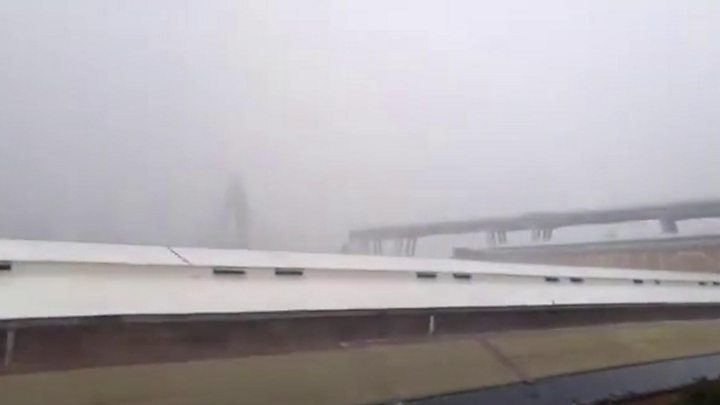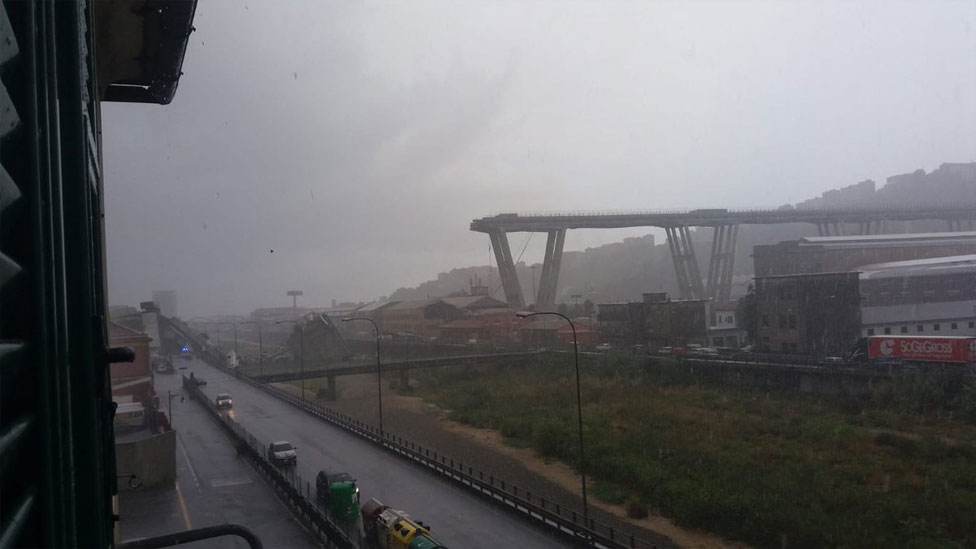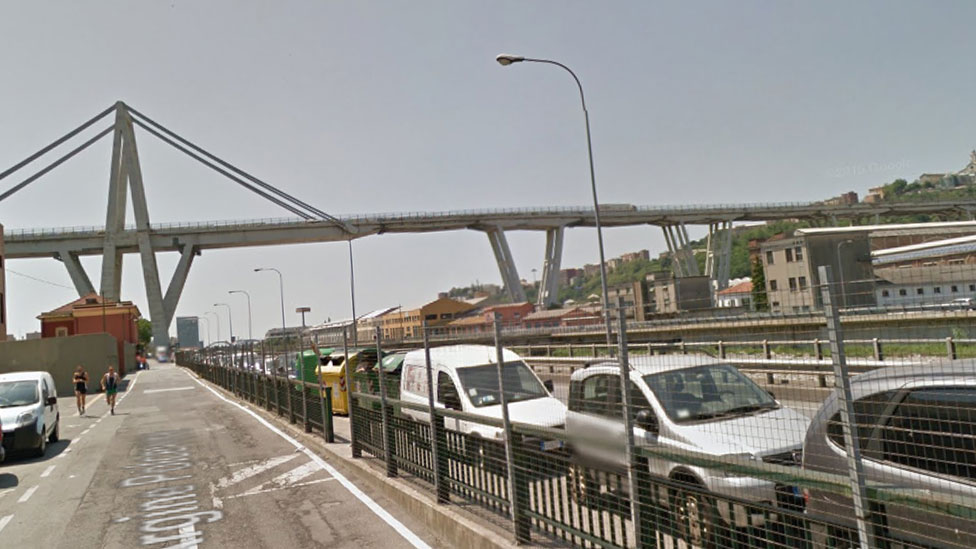
Rescuers are continuing to look for survivors after a motorway bridge collapsed in the Italian city of Genoa on Tuesday.
Police say at least 37 people were killed when dozens of vehicles fell 45m (148ft) from the Morandi bridge during bad weather.
The number of people who are reportedly missing ranges from four to 12.
Images from the scene show a huge section of the bridge missing, with vehicles perched close to the edge.
Here is what we know so far about the disaster.
The bridge
The Morandi bridge carries a major road, the A10 toll motorway, which serves the Italian Riviera and links northern Italy to France.

Part of the 1.2km (0.8 mile) long bridge spans the Polcevera waterway, with other portions reaching over railway lines and buildings.
It was designed by Riccardo Morandi and completed in 1967, but restructuring work was done in 2016.
Some major repairs were also done to the bridge in the 1990s.
The motorway operator said work to shore up the bridge's foundation was being carried out at the time of the collapse, during which time it was being constantly monitored.
The collapse
A section measuring about 200m fell at around 11:30 local time (09:30 GMT). Police say there was a violent cloudburst at the time.
It is not yet clear what caused the disaster, but several explanations have been offered.
Some experts have suggested that the ongoing maintenance work may have been a factor in the collapse.
Others have suggested it may have been caused by a design flaw or heavy traffic.
The bridge sees some 25 million vehicles every year, and a 2011 report by an Italian highways company said that the bridge had been suffering from degradation.
Antonio Brencich, a structural engineer who lectures at Genoa University, wrote in 2016 that it may have been more economical to rebuild the bridge because of the ongoing maintenance costs.
"There are errors in this bridge. Sooner or later, it will have to be replaced. I don't know when," he warned.
The victims
Details about those killed in the collapse are continuing to emerge, but some victims have been named.
A young family of three were killed after their car fell from the bridge. They have been identified in Italian media as Roberto Robbiano, Ersilia Piccinino, and their seven-year-old son Samuel.
Amateur footballer Andrea Cerulli was also killed as he was driving to work. His team in Genoa confirmed his death in a tribute posted to their Facebook page.
The survivors
Some survivors have recounted dramatic stories of the disaster.
The car of Davide Capello, 33, a former goalkeeper for Serie A side Cagliari, went down with the collapsed bridge but he survived.
"I was driving along the bridge, and at a certain point I saw the road in front of me collapse, and I went down with the car," he told local media.
"I was able to get out... I don't know how my car wasn't crushed. It seemed like a scene from a film, it was the apocalypse," he said.
One man who was standing underneath the bridge said the collapse sent him flying more than 10m into a wall.
"I was in front of [my] truck and flew away, like everything else," he told the Associated Press. "Yes, I think it's a miracle. I don't know what to say. I'm out of words," he said.
The response
Interior Minister and Deputy PM Matteo Salvini said the disaster showed that Italy needed to spend more on infrastructure regardless of European Union budget constraints.
"We should ask ourselves whether respecting these limits is more important than the safety of Italian citizens," he said. Obviously for me, it is not."
He added that he was committed to finding those responsible for the "unacceptable disaster".
"I will do everything to get the names and surnames of the managers responsible, past and present," he said.
On Wednesday, Transport Minister Danilo Toninelli called for resignations at the Italian highways agency which operated the bridge.
"The top management of Autostrade per l'Italia must step down first of all," he said in a Facebook post.
He added that moves to fine and dissolve the company were under way.
But an official from the company insisted the collapse was "unexpected and unpredictable".
"The bridge was constantly monitored and supervised well beyond what the law required," Stefano Marigliani told Reuters news agency.

